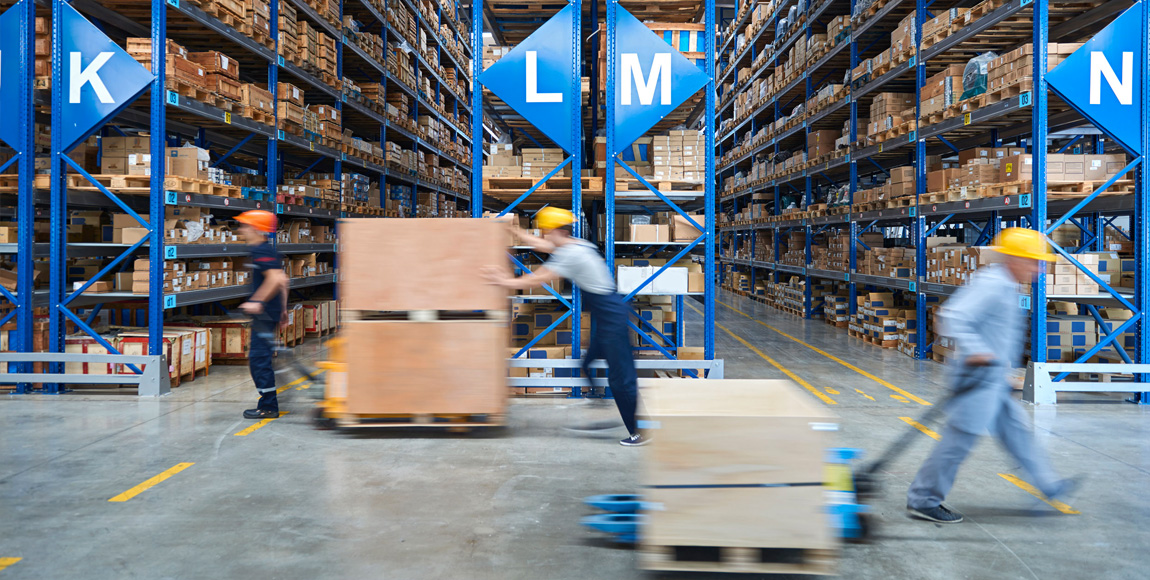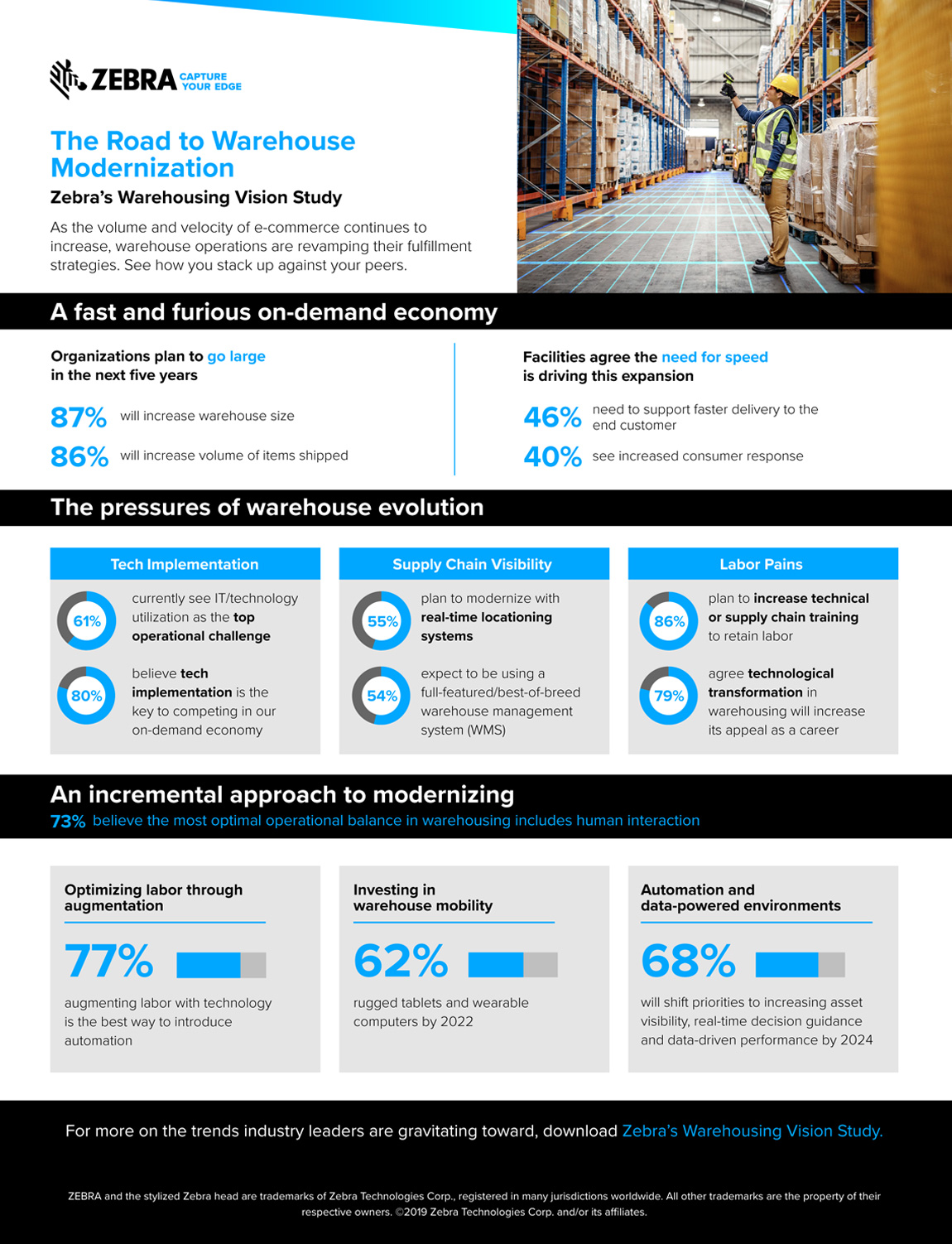Predicting warehouse trends

Eighty-seven percent of businesses globally plan to expand their warehouse footprints over next five years, according to a recent survey
Results of a recent global warehousing study by United States-based Zebra Technologies Corporation shows that automation and worker augmentation solutions will be a key focus for IT and operations decision-makers over the next five years.
In a statement, the company points out that more than three-quarters (77 percent) of respondents to its survey agreed that augmenting workers with technology was the best way to introduce automation in the warehouse, but only 35 percent had a clear understanding of where to start automating.
Eighty-seven percent of decision-makers were in the process of, or planning to, expand the sizes of their warehouses by 2024, with 82 percent anticipating an increase in the number of warehouses under their control during this timeframe.
“IT and operations decision-makers are prepared to meet heightened demand over the next five years by taking an incremental approach to modernising their warehouse operations, in which they will aim to improve individual and team productivity while achieving workflow conformity,” says Mark Wheeler, the company’s director of supply chain solutions.
“By 2024, leaders will shift their focus to the integration of more holistic solutions to build data-powered environments that balance labour and automation in the warehouse, ultimately empowering front-line workers with a performance edge to lead the way.”
Key findings of the survey were:
By 2024, automation will enhance worker performance rather than replace workers.
• Sixty-one percent of decision-makers plan to enable partial automation or labour augmentation with technology in the warehouse;
• Three-quarters of respondents believe human interaction is part of their optimal operational balance, with 39 percent citing partial automation (some human involvement) and 34 percent citing augmentation (equipping workers with devices) as their preferences;
• By 2024, decision-makers anticipate using robotics/bots for inbound inventory management (24 percent), outbound packing (22 percent) and goods in/receiving (20 percent).
Rethinking fulfilment strategies and operations to meet emerging challenges across the warehouse remains a top priority.
• Fifty-nine percent of respondents cite capacity utilisation as a significant, expected challenge and plan to address it by expanding the size of their warehouses;
• Sixty percent of organisations cite labour recruitment and/or labour efficiency and productivity among their top challenges, with 63 percent of respondents noting an immediate focus on individual or team productivity outcomes;
• IT/technology utilisation is identified as the most anticipated operational challenge (61 percent) over the next five years with a desired, long-term outcome for increased asset visibility, real-time guidance and data-driven performance;
• As warehouses expand, so will the volume of stock keeping units (SKUs) and the speed at which items need to be shipped. Decision-makers will seek increased visibility and productivity by implementing more robust returns management operations (81 percent), task interleaving (80 percent), value-added services (80 percent) and third-party logistics (83 percent).
The investment and implementation of new technologies is critical for remaining competitive in the on-demand economy.
• Almost half (46 percent) of surveyed respondents cite faster delivery to end-customers as the primary factor driving their warehouse growth plans;
• More than three-quarters (77 percent) of decision-makers agree that they need to modernise operations across the warehouse to remain competitive in the on-demand economy – but are slow to implement new mobile devices and technology;
• Seventy-three percent of companies are currently modernising their warehouses by implementing or refreshing mobile computers, tablets and barcode scanners;
• By 2024, modernisation will be driven by Android-based mobile computing solutions (83 percent), real-time location systems (55 percent) and full-featured warehouse management systems (54 percent);
• Sixty percent of respondents cite mobile barcode labels or thermal printers as a key area of investment as part of their plans to add, expand, or upgrade devices in the next five years.

Published by
Focus on Transport
focusmagsa




